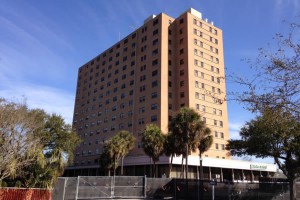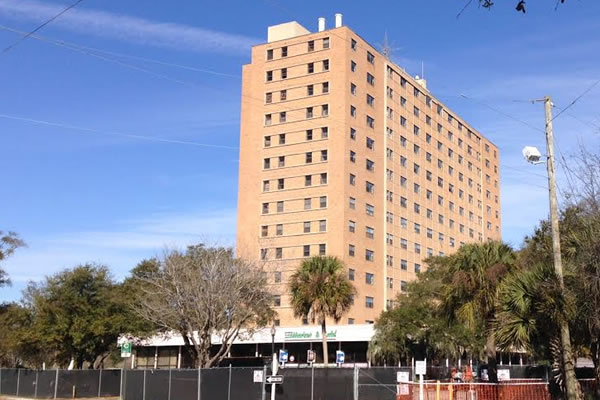By Margot Rose and Jay Williams Jr. | If you like “The Boulevard,” the apartment-office complex on Coleman Blvd, you’re probably a fan of the proposed new Sergeant Jasper complex on Broad Street!
It may not look the same, but that same developer’s plans for a new Broad Street apartment-retail complex are generating the same anxiety here that “The Boulevard” did in Mount Pleasant.
“I want to see our community dotted with oak trees, not high-rise buildings,” one Mount Pleasant resident said. “We’re not going to solve the overdevelopment problem with more development.”
Trees be damned. “The Boulevard” got built!
How did it happen?
Mount Pleasant’s Town Council altered the zoning code along sections of its business district to allow for this big new development. Here in Charleston, this same developer wants this city to change its zoning, too. The Beach Company has applied for a PUD, Planned Unit Development, which would obliterate the existing, more restrictive zoning and setback requirements.
Why does the developer want a PUD?
This area of Broad Street is now zoned “Limited Business.” That zoning designation requires businesses to close by 11 p.m. It’s also part of the Old City Height District that restricts building heights to 35 feet, just two or three stories. The developer doesn’t want those restrictions.
And if the PUD application is approved, these and other restrictions simply vanish.
Armed with a PUD, the Beach Company will build 454 apartments some 90 feet in the air, erect a giant 750-car parking garage and, for good measure, jam in a 24-hour supermarket along Broad Street.
It’s all proposed for one of the quietest sections of the peninsula. And there’s not much left that’s quiet in Charleston.
 If you got near the packed Charleston Planning Commission meeting room last month, you heard the energized neighborhood opposition to this Sergeant Jasper PUD application. The overflow crowd was so large that the hearing was deferred until 5 p.m., Monday, March 16, at Burke High School.
If you got near the packed Charleston Planning Commission meeting room last month, you heard the energized neighborhood opposition to this Sergeant Jasper PUD application. The overflow crowd was so large that the hearing was deferred until 5 p.m., Monday, March 16, at Burke High School.
But Mount Pleasant residents thronged to their town meetings, too. “Seventy-five feet is just not conducive to the town of Mount Pleasant,” another resident there said.
We know how that story ended.
Here it should be different
The west end of Broad Street is not the center of a bustling business district. It’s at the edge of two historic residential neighborhoods and it’s one of the few relaxing places left overlooking the marsh and Ashley River.
And to get a PUD approved, this area would—in spite of all visual evidence—have to be designated by the City as an “urban core.” That designation is reserved for the most concentrated business districts like Upper King and Meeting Streets. What’s the point of long range planning if these zoning designations can be arbitrarily moved about?
Unfortunately some urban planners don’t care about context. They’re like hammers when there are nails all around. They want to build something, create density, inspire people to walk and ride their bikes. That idea may be perfect for some places, as Evan Thompson once said, that are “bereft of an architectural vocabulary.” Think Myrtle Beach.
But in America’s most historic city, context matters.
The Sergeant Jasper is the aberration in an otherwise lovely area, next to Colonial Lake, across from two buildings on the National Register, near the marsh, water and small boats, in an area of one, two and three story homes. That’s the context of this peaceful western gateway to the Historic District.
Charleston’s sense of place is why people move here — to enjoy a more gracious way of life, to appreciate magnificent architecture and to live in neighborhoods built at a time when even the trees and gardens were in proportion. This context reveals our nation’s history expressed along quiet streets lined with beautiful homes that have survived wars, fires, earthquakes and the forces of urbanization and modernization. Context is the reason that 5 million visitors come to Charleston each year.
It’s not to see “The Boulevard.”




 We Can Do Better, South Carolina!
We Can Do Better, South Carolina!
























